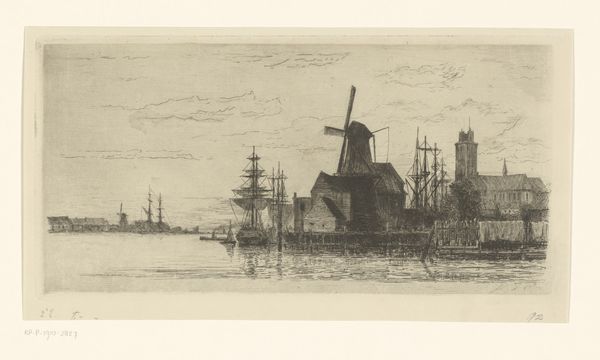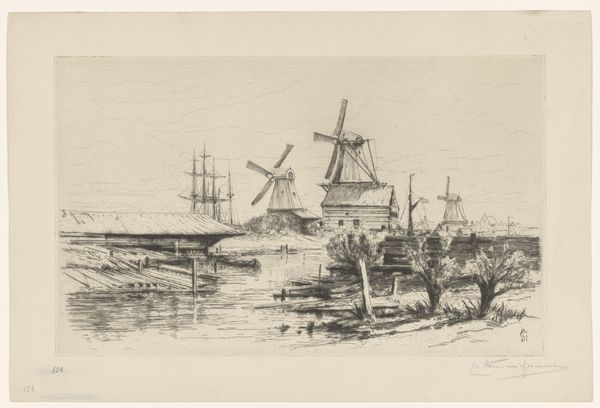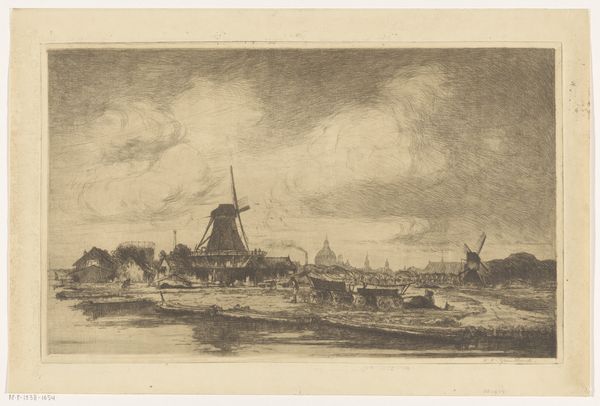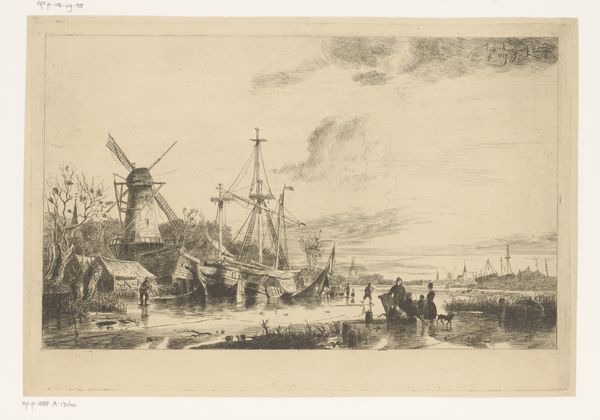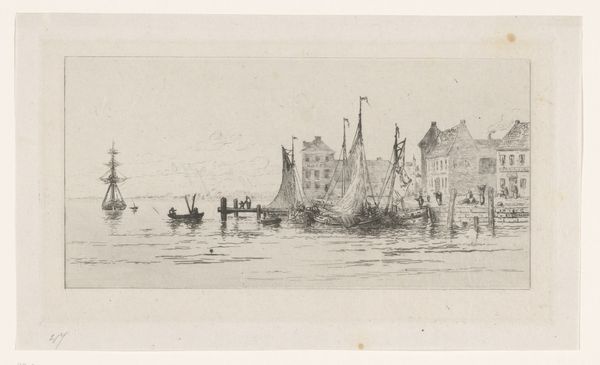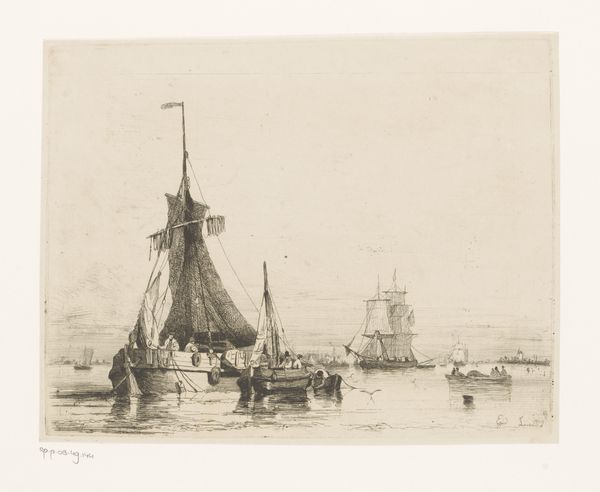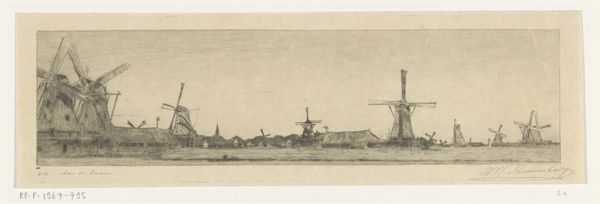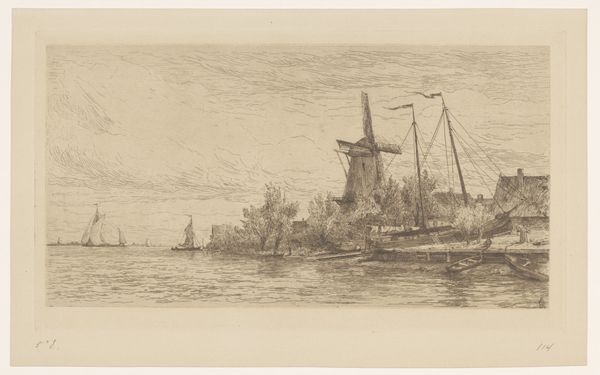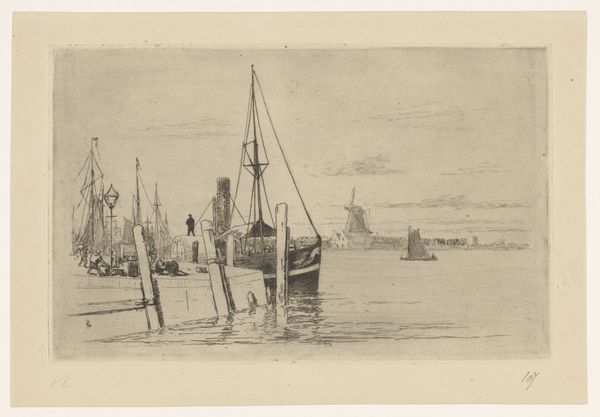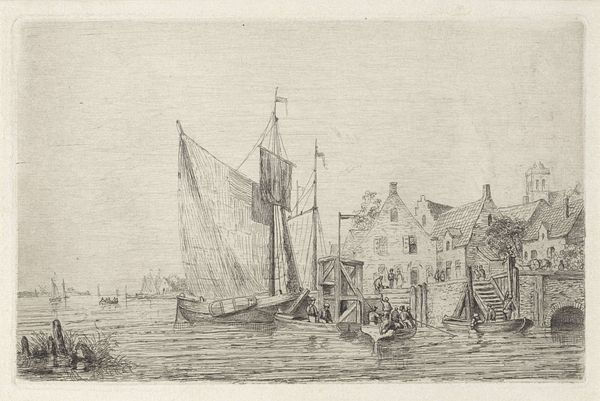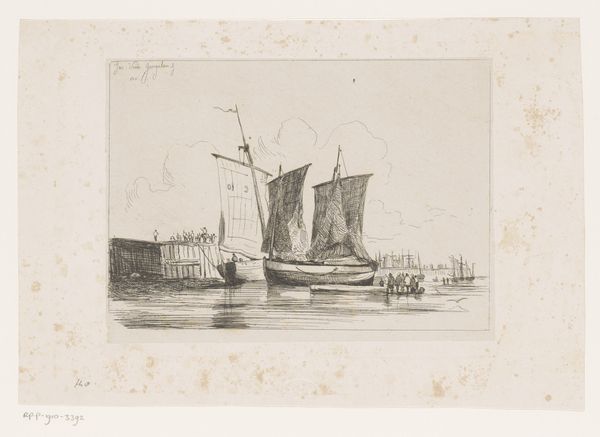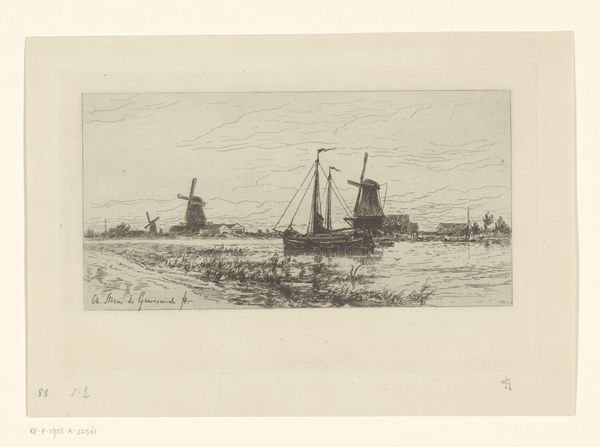
print, etching
#
dutch-golden-age
# print
#
etching
#
landscape
#
etching
#
line
#
cityscape
Dimensions: height 154 mm, width 305 mm
Copyright: Rijks Museum: Open Domain
Curator: Here we have Carel Nicolaas Storm van 's-Gravesande's "View of Dordrecht," an etching created around 1877. Editor: It's quite serene, almost muted in its presentation. The subdued palette and fine lines give it a hushed quality. Curator: Indeed. What draws me in are the complex, interwoven lines that define the forms. Notice how the artist varies the etching technique to create depth and texture, moving from the distant cityscape to the prominent windmill and ships in the foreground. It’s a real masterclass in tonal variation achieved through line work. Editor: It certainly is visually striking, though I can't help but wonder about the social implications embedded in such scenes. Dordrecht, a historically significant port city, was a hub of commerce and also exploitation. How do we reconcile the idyllic image with the realities of trade during that time, specifically the exploitation tied to maritime industries? Curator: That is a crucial point to consider. However, looking at the formal aspects, it's important to note that the composition is skillfully balanced, with the strong vertical elements of the windmill, ships' masts, and the distant church tower counterpointed by the horizontal expanse of the water. The use of line leads the eye smoothly across the image. Editor: And what does that careful leading of the eye ultimately serve? Doesn't it reinforce a particular vision of Dutch prosperity, one that potentially overshadows the labor and inequities inherent in the system? It’s easy to get lost in the technique, but we must always interrogate whose stories are being told—and whose are being left out. Curator: A vital reminder for us. Perhaps the seemingly simple structure serves a far more elaborate role in promoting cultural ideals than first thought. Editor: Precisely. Art never exists in a vacuum; it echoes with both intentions and absences. Thinking about what we aren't immediately shown becomes as important as celebrating the craftsmanship itself. Curator: An intersection we need to embrace when looking at pieces such as these, offering fresh ideas about Dutch heritage and the narrative framing of its art history.
Comments
No comments
Be the first to comment and join the conversation on the ultimate creative platform.
